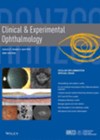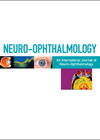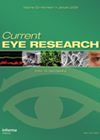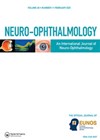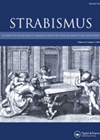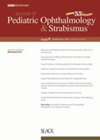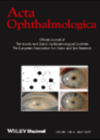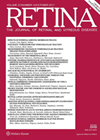You searched for "referrals"
Viral uveitis
1 October 2019
| Ivan Yip
|
EYE - Vitreo-Retinal
This review covers viral causes of anterior uveitis. A viral aetiology should be suspected when anterior uveitis is accompanied by ocular hypertension, diffuse stellate keratic precipitates or the presence of iris atrophy. Most common viruses associated are herpes simplex, varicella-zoster...
Using small amplitude saccades to assess saccadic velocity
5 August 2020
| Claire Howard
|
EYE - Neuro-ophthalmology
|
Small amplitude saccades, saccades, saccadic velocity, clinical assessment
Saccades are a key component in the assessment and diagnosis of neuro-ophthalmological disorders. Clinicians are typically taught to use large amplitude saccades (LAS) of at least 20 degrees to assess saccadic velocity. It has been suggested, however, that small amplitude...
Support for patients with nystagmus
This is a qualitative study in patients with nystagmus identified through regional clinics, charity events and the Royal National Institute of Blind People (RNIB). Two hundred and fifty-one participants were identified, with 184 respondents included in the study. Fifty-six percent...Use of group consultations in the management of idiopathic intracranial hypertension
1 December 2021
| Claire Howard
|
EYE - Neuro-ophthalmology
|
Group Consultations, idiopathic intracranial hypertension
The incidence of idiopathic intracranial hypertension (IIH) has risen by >100% between 2002 and 2016 in the UK, in association with rising obesity rates. This increasing incidence has inevitably led to increased pressures on service capacity. Evidence for other conditions...
Patients prefer vision from lasik than from smile in a contralateral-eye trial
This prospective, randomised, single surgeon, contralateral-eye clinical trial compared the results in myopic patients undergoing wavefront-guided femtosecond laser in situ keratomileusis (LASIK) in one eye and small-incision lenticule extraction (SMILE) in the fellow eye. The patient-reported outcomes with laser in...Surgical management and review of congenital inferior rectus dysgenesis
Three cases are presented of congenital inferior rectus (IR) dysgenesis causing hypertropia. Case 1 was a two-year-old female with intermittent vertical strabismus of 20PD and -2 limitation on depression, worse in abduction. MRI imaging showed a hypoplastic IR. Following surgery,...Use of control scores for intermittent exotropia
This study surveyed paediatric ophthalmologists to determine their use of the Newcastle, PEDIG and LACTOSE control scores in the diagnosis and management of intermittent exotropia. The authors aimed to identify how frequently control scores are used clinically, the barriers to...Prismatic contact lens correction vs prismatic glasses
The aim of this study was to verify if diplopia could be corrected by applying soft directional prism contact lenses, to compare effectiveness of diplopia correction, comfort and quality of vision with these contact lenses compared to prism glasses. This...Randomised controlled trial for large-angle exotropia surgery
The purpose of this study was to investigate single eye, single setting surgical options to correct 80–90PD of exotropia with two options of muscle transplant and suture hang-back recession. There was retention of anatomical limits of 6mm resection for medial...Long-term outcomes of deep anterior lamellar versus penetrating keratoplasty for keratoconus
This is a retrospective consecutive and comparative case series of keratoplasties (228 deep anterior lamellar keratoplasties (DALKs) and 274 penetrating keratoplasties (PKs)) in a single centre by one surgeon in France, between 1993 and 2021. Graft survival was 96.7% at...What about the children? Cornea cross-linking for children with keratoconus
1 October 2017
| Eulee Seow
|
EYE - Cornea, EYE - General
|
cornea, cross-linking, keratoconus, paediatric
Keratoconus can behave more aggressively in paediatric than in adult patients. Collagen cross-linking has been shown to slow the progression of keratoconus in adults. This systematic review determined the effectiveness of corneal collagen cross-linking (CXL) in children. For this study,...
Subfoveal choroidal thickness and PCV
1 April 2018
| Saruban Pasu
|
EYE - Vitreo-Retinal
This report studies the prognostic factors for visual improvement and the need for additional treatments at one year after the initial combination therapy of intravitreal ranibizumab injection or intravitreal aflibercept injection followed by PDT in eyes with PCV. Fifty-six eyes...

